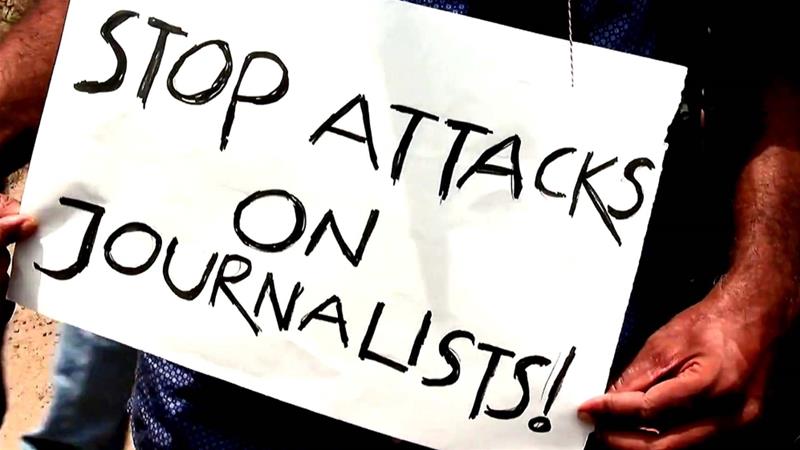There is a general sense in Pakistan’s two smaller provinces – Balochistan and Khyber Pakhtunkhwa – and the border regions with Afghanistan that the mainstream media of the country generally ignores them while giving too much coverage to urban areas of Punjab and Sindh provinces.
Balochistan which is the biggest province of the country area-wise gets the least attention of the mainstream media of the country. In August 2014, a senior local journalist along with two of his colleagues was assassinated in his Quetta office in an incident of target-killing. But the news could not get much attention in the mainstream media which was mainly focused giving an extraordinary extensive coverage to the anti-government protests in Islamabad.
Irshad Mastoi was shot along with a trainee journalist Abdul Rasul and an accountant in his office at a centrally located building in the provincial capital Quetta on August 28, 2014. Over the preceding six years dozens of journalists have been murdered in Pakistan, many of them from Khyber Pakhtunkhwa, Balochistan and the tribal region of FATA which borders Afghanistan.
The journalists’ communities from Khyber Pakhtunkhwa, Balochistan and the FATA complain that the mainstream media of the country gives a lot more attention to any attacks on journalists in the two bigger provinces and the capital Islamabad compared to the ones carried out against local journalists in the two smaller provinces and the FATA region.
Giving an example, members of the journalists’ communities from the smaller provinces of Pakistan say when earlier this year two senior journalists, Hamid Mir and Raza Rumi, were injured in two separate attacks, the main Pakistani media gave an extensive coverage to the tragic incidents for several weeks. Both of them worked with the two main news TV channels which have their base in the capital Islamabad and the biggest province Punjab. They complain if these journalists were from the smaller provinces of Khyber Pakhtunkhwa or Balochistan the attacks would likely have inadequate coverage by the mainstream media of the country.
It is not only the members of journalists’ communities from the smaller provinces who are complaining that they are being ignored by the mainstream Pakistani media, the politicians, members of the civic societies from these regions have similar complaints against the mainstream Pakistani media.
In June 2014, Pakistan launched a long-awaited military action against the Taliban and other militants in the North Waziristan area of FATA. As result of the military action more than one million local people were displaced from the region, many of whom shifted to makeshift camps while some others are living without any shelter. Soon after the military action two anti-government politicians along with many of their supporters march on the capital Islamabad and staged a long sit-in against the government demanding resignation of the Prime Minister Nawaz Sharif. The Pakistani media almost completely ignored the plight of more one million internally displaced people from North Waziristan and this important military action, described as crucial for the survival of the country.
The mainstream news TV channels instead continued round-the-clock live coverage to the sit-ins for last several weeks. Many of these internal refugees complained that they are giving sacrifices for the national security of the whole country but the central government and the mainstream media have completely ignored them.
Some local journalists from Khyber Pakhtunkhwa, which borders North Waziristan, said there is a general sense among the internal refugees from North Waziristan that the government didn’t do much to provide them with basic facilities, mainly because the Pakistani media was focused on the Islamabad protests. These refugees complain that ever since the anti-government demonstrations have started in the capital Islamabad the main news TV channels of the country have almost completely ignored them and the humanitarian aspect of their displacement.
There is also a sense among analysts that the disproportionately extensive media coverage encouraged the demonstrators and their leaders to harden their stands and plunge the country into a prolonged political crisis.
Some years ago, feeling under pressure that the smaller provinces are not being given enough coverage by the mainstream, Geo TV, one of the main news channels of the country, launched a special talk-show called ‘Jirga’ to highlight issues relating to the two smaller provinces and the FATA region. One of its shows in the fall of 2014 was held in Quetta, the capital of Balochistan province. The host of the show, Salim Safi, was shocked to see the level of anger among local politicians who were complaining that their province was being completely ignored by the country’s news media though it is as much part of the country as the two provinces of the country.
Media observers believe, it is actually the cut-throat competition in the media market and the ratings that mater to the owners of the news media in Pakistan. They say it’s the market aspect and revenues that the news media moguls are more interested than the humanitarian aspects of the life in the smaller provinces of the country or the FATA region.
The author has 18 years of experience in reporting, analyzing and commenting on politics in Pakistan and Afghanistan. He has worked with the BBC in London, Voice of America in Washington and Radio Free Europe in Prague. As a senior journalist from the region, Ghilzai has contributed numerous articles to these and other media broadcasters and publications.
Smaller Provinces' Complaint Against Mainstream Media
- December 11, 2014
- 5:31 am
- No Comments
More from the News section
July 26, 2023
No Comments
June 20, 2023
2 Comments
March 21, 2023
No Comments
August 30, 2022
No Comments
August 30, 2022
No Comments
Resize text-+=
